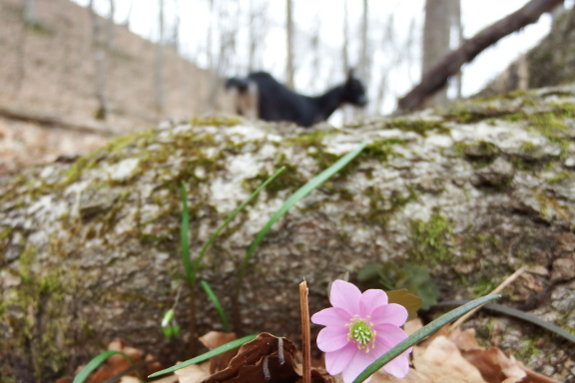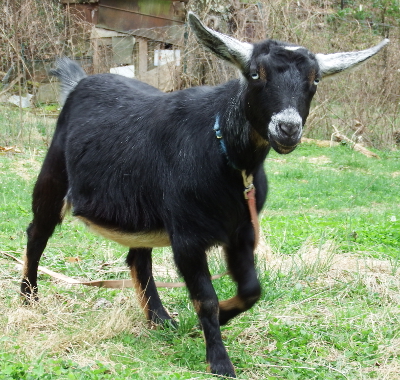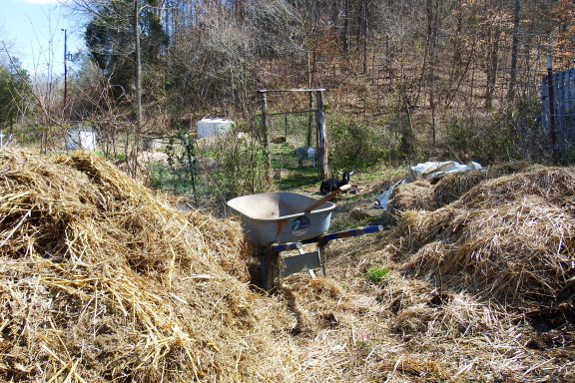
Lessons learned from chemical goat deworming

As usual with goats and worms, the result of my second fecal analysis on Artemesia was a case of good news/bad news.
 The
good news is that the worms that were really overloading her --- thread
worms --- had a 100% kill rate from Safe-guard. I still feel the kid(s)
kicking in her belly on a regular basis too, so hopefully the
supposedly safe dewormer really did have no negative effects on her
pregnancy.
The
good news is that the worms that were really overloading her --- thread
worms --- had a 100% kill rate from Safe-guard. I still feel the kid(s)
kicking in her belly on a regular basis too, so hopefully the
supposedly safe dewormer really did have no negative effects on her
pregnancy.
The bad news is that the
other species present (possibly twisted stomach worm) wasn't killed at
all, meaning that it's resistant to this common dewormer. In fact, that
species' numbers might have risen slightly after the dewormer reduced
competition for Artemesia's gut space. At 21 eggs in one slide from four
pellets during round two, the other worm's populations are right on the
edge of dangerous...but I'll take a wait-and-see approach there and
test again in a week.

With 20/20 hindsight, here's what I've learned from my first foray into chemical dewormers:
- Identify your worm eggs to species every time you do a fecal exam and then do your counts by species. I wish I had real data (not just a gut feeling) on whether or not the second worm species increased in numbers post deworming.
- Would a probiotic supplement after deworming have prevented the rise of worm species two? I don't know, but it's worth a try.
- Clean out the barn before deworming. I don't want to use the
manure that fell post-deworming in the vegetable garden in the near
future, so I gave our most recent barn cleaning its own composting zone.
The trouble is, I hadn't cleaned out the barn for in a few weeks
beforehand, so I "lost" more organic matter than I would have liked in
the process.
Live and learn!
Want more in-depth information? Browse through our books.
Or explore more posts by date or by subject.
About us: Anna Hess and Mark Hamilton spent over a decade living self-sufficiently in the mountains of Virginia before moving north to start over from scratch in the foothills of Ohio. They've experimented with permaculture, no-till gardening, trailersteading, home-based microbusinesses and much more, writing about their adventures in both blogs and books.
Want to be notified when new comments are posted on this page? Click on the RSS button after you add a comment to subscribe to the comment feed, or simply check the box beside "email replies to me" while writing your comment.

Dewormers are "safe" because they are not absorbed into the circulation to any great extent. Those used for humans are the same ones used for livestock.
The best way to avoid (at least, slow down) resistance, whether we're talking about worms, bacteria, weeds, etc, is to use two agents at once. Eg: if natural resistance already in the population is one in a million for each agent, then the chances that any single bug is resistant to both is 1 in a million millions. (10^-6 x 10^-6= 10^-12)
Roland --- The tricky part at the moment is choosing dewormers that are not only effective but also safe during pregnancy. I'm going to do another fecal analysis this weekend, but I'm hoping to be able to leave Artemesia's guts alone until after she kids. Then, if necessary, we can pull out the big guns.
Doc --- Well, they can be safe for humans while still wreaking havoc on the garden ecosystem. That's what I'm most concerned about when it comes to using them in the garden. I've worked hard to get my microbes in balance --- don't want to throw them off!
Good idea on the double dewormer technique, though.